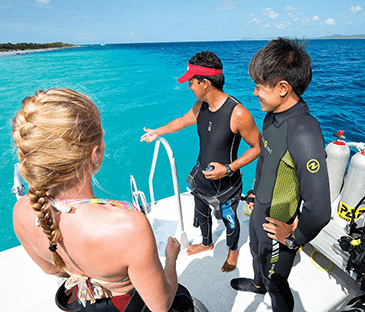Lesson 70
Learning Objectives
By the end of this section, I should be able to answer these questions:
1. How do I learn to assess conditions?
2. What should I do if any aspect of a dive, including my assessment of the environment, causes me significant concern and/or anxiety?
3. How do the different factors discussed in this section relate to the importance of getting an orientation when diving in unfamiliar environments?
Assessing Conditions
One of the skills you will develop as a diver is how to assess conditions. This is a skill you learn based upon what your instructor and other divers show you, and from your experiences as you go diving and continue your education.
Through these, you will learn to assess the dive conditions at a site based on:
- The weather
- The season
- Water motion
- Water appearance
- Reports online and from other divers
- Dives made at similar sites in the area
Your assessment should include the decision to dive or to not dive. If your assessment (or any other aspect of the dive) causes you significant concern or anxiety, your first option is to get more information about the concern and how to handle it. If you can’t reasonably address whatever the issue is, and you can’t go to another dive site where you are comfortable, do not dive.

Remember that ultimately, you decide to dive. You are responsible for your own safety, so only you can make the final decision to dive.
Each environment has individual factors that differ from other dive environments. This is why it is important to get a local environmental orientation (Discover Local Diving) and gain experience when diving in an unfamiliar environment.

Other options for getting oriented to a new environment are to take a course with a PADI Instructor, or to dive with someone familiar with the area.
These orientations are important for both safety and for making your dives more enjoyable.
Quick quiz
Module Three

I'll take you diving!
Copyright © Larry Wedgewood Scuba Instruction All Rights Reserved

